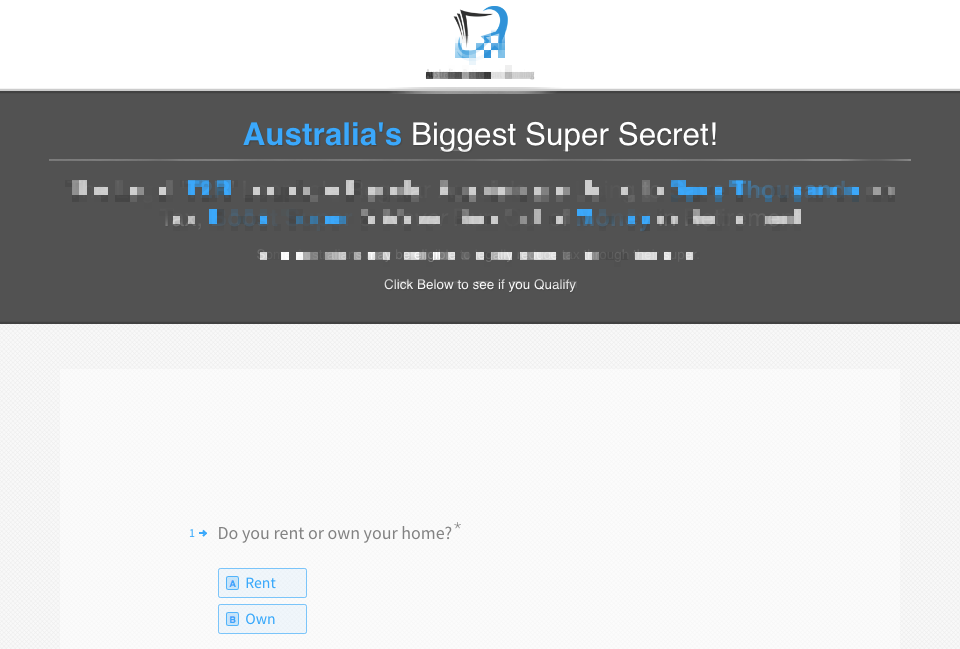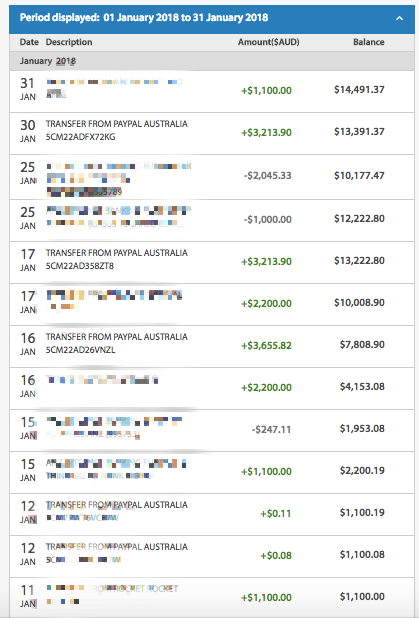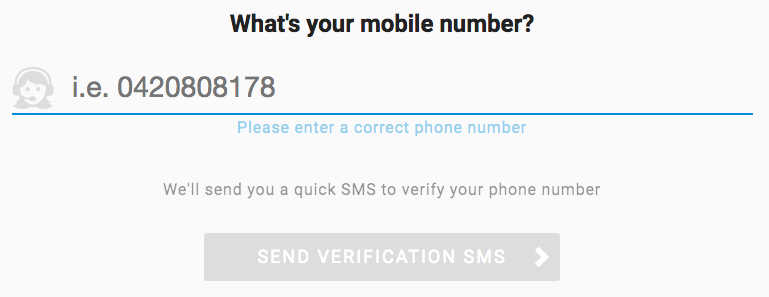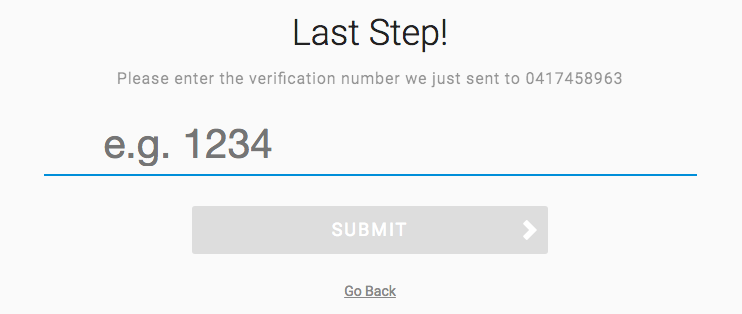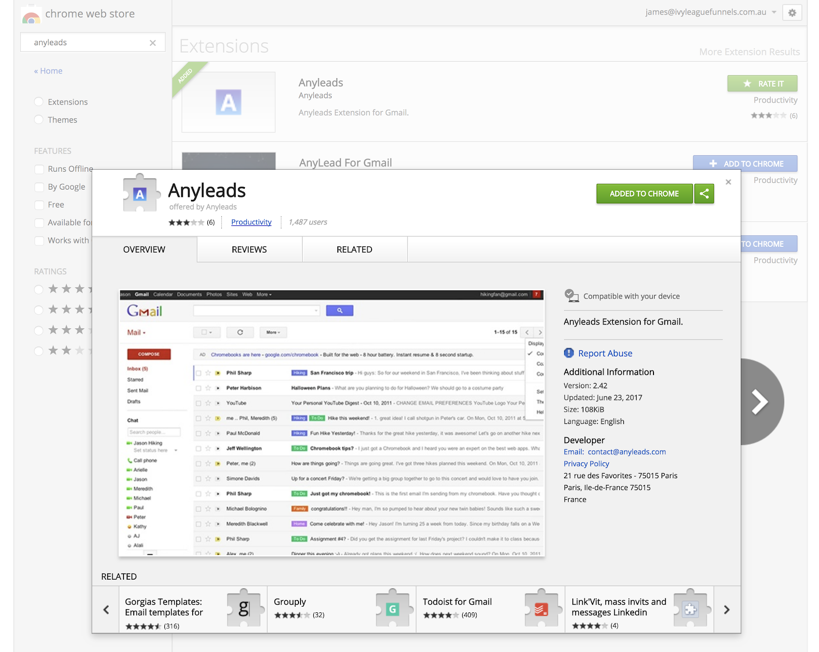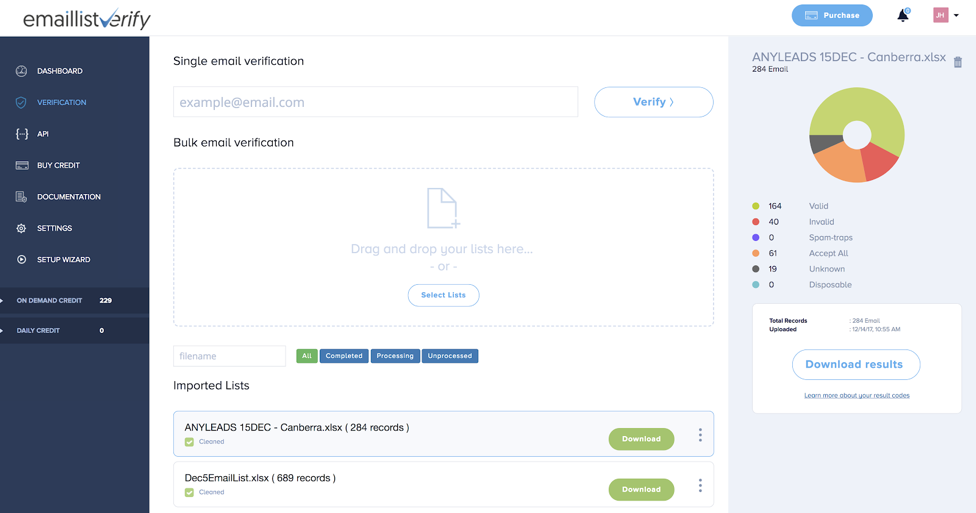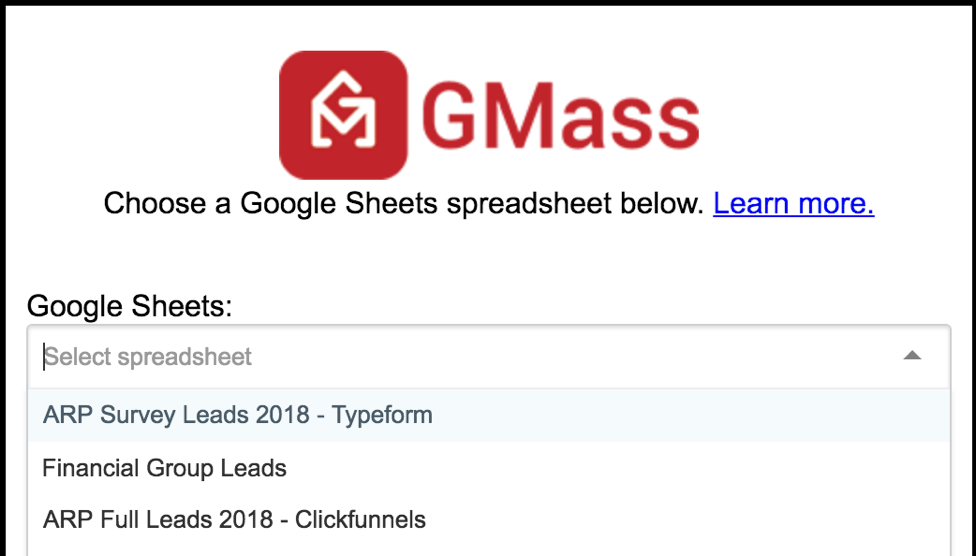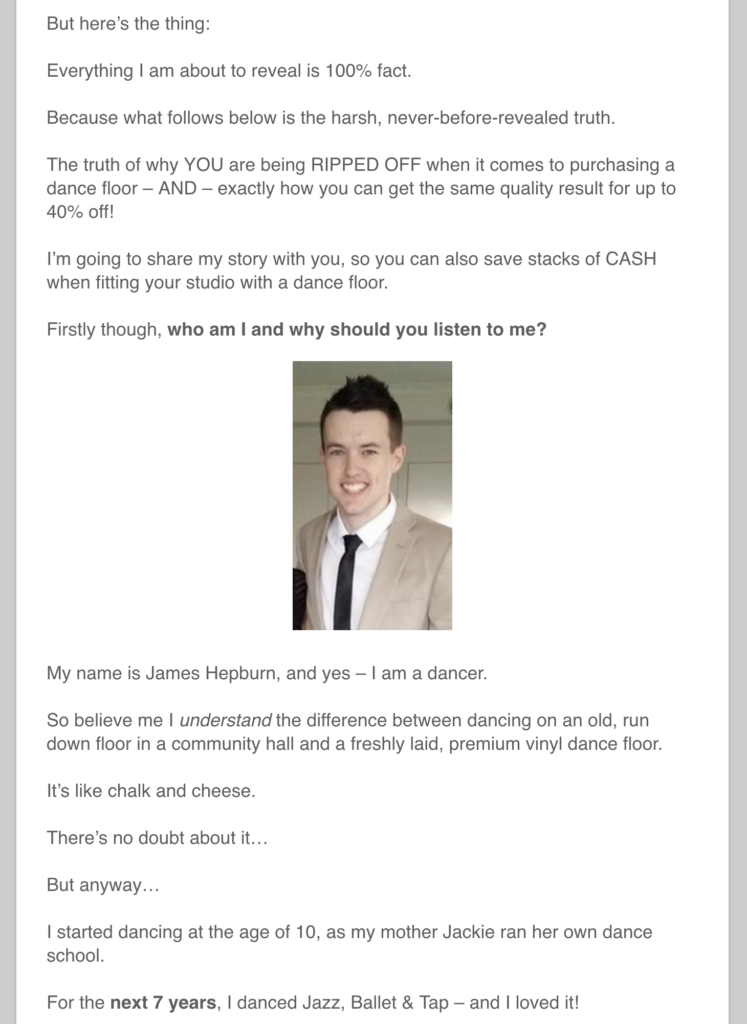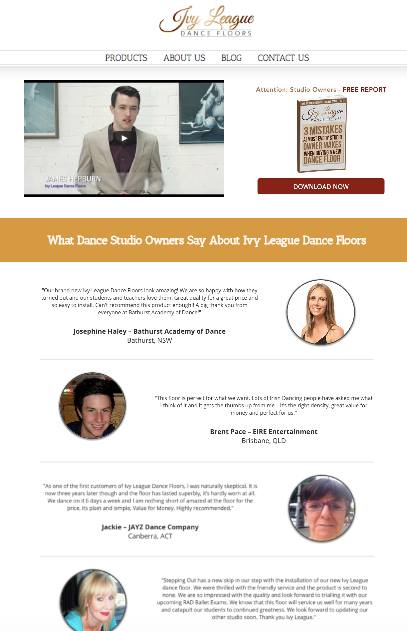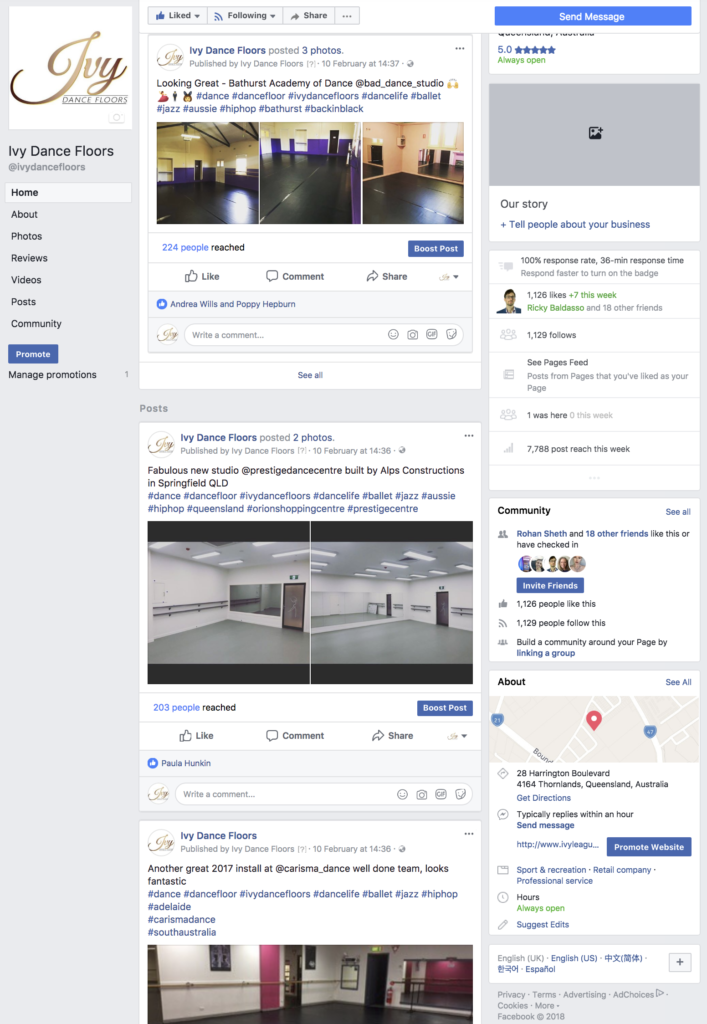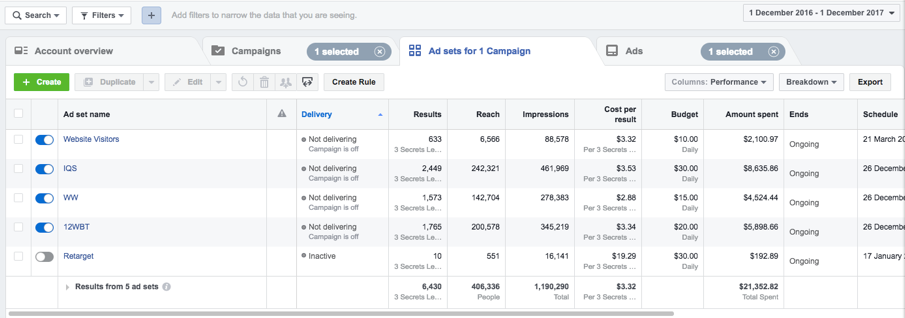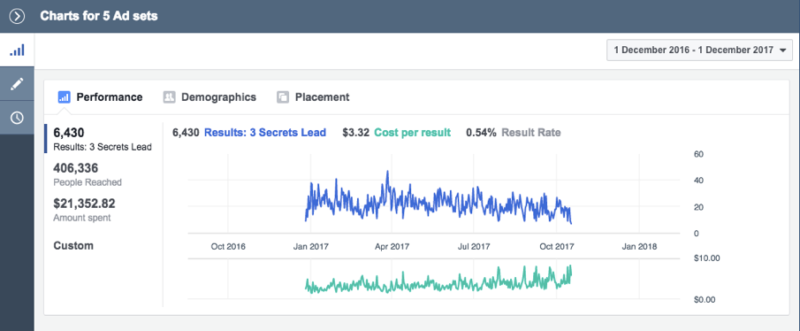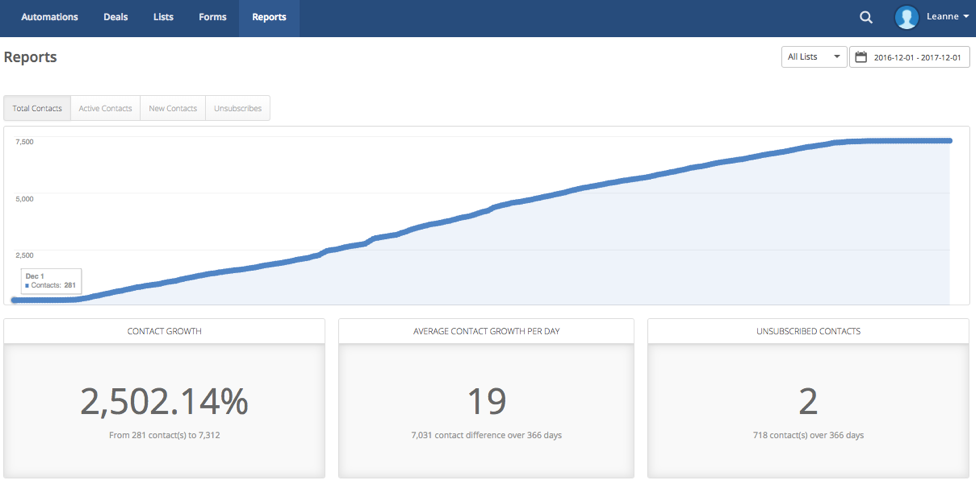Featured Blog Reading a blog isn't the only way to get more traffic.
-

26 Sales Copy Hacks Any Business Owner Can Use to Double Sales, Increase Conversions and Explode ROI from Your Ad Spend (Part 1)
Read moreIn this series of posts, I’m going to reveal 26 sales copy hacks I’ve discovered over the past 4 years. In this time, I have personally:
– Written Copy in over 12 different niches
– Strategically Created & Implemented $100,000 per month Marketing Campaigns
– Crafted Sales Letters that have Generated over $150,000
– Spent Thousands on Mentoring by the Best Copywriters and Marketers on the Planet
– Plus tonnes more
I’m sure you get the idea.
From all of my experience, here’s what I know:
There are tonnes of things that go into writing sales copy that will flood your pockets with cash…
But the reality is – anyone who knows these secrets will never share them for free.
Until now.
So I’ve analysed all of my successful campaigns and distilled 26 things you can do to dramatically improve your sales copy over night.
In this post, I’m going to reveal the first 9.
The remaining 17 will be split over the next 2 posts… because frankly, this stuff takes too long to write, and no one will read it all in one post.
So – in no particular order, here goes:
Copy Hack #1. Speak Your Ads
This is a simple hack but incredibly effective. Especially for people starting out.
Whenever you are writing an ad, speak it out.
Yep, physically say the words you want to write… record them on a voice recording app and then transcribe it.
Why?
Because copywriting is salesmanship in print, and salesmanship is the art of the spoken word.
So it makes sense that if you are creating salesmanship in print, you would speak the words first, and then write them.
The reason this is so effective is because most of us, have unfortunately been taught how to write in an academic matter… which never translates to the world of copy, marketing and sales.
Which is why 99% of business owners absolutely suck at writing ads.
If you’ve been to university or college, you are at a distinct disadvantage, because at these places we learn to speak in a very complex and convoluted way.
College improves our vocabulary. We end up speaking like a bunch of academic professors.
Just ask me… I studied engineering.
It’s not conducive to writing great sales copy at all.
The average person in the population is at an 8th grade level of reading and writing. So you need to write your ads as if you are speaking to a 14 year old.
The best way to do this is speak it.
You’ll thank me later.
Copy Hack #2. Fast, Quick & Easy
Everyone in the world wants things fast, quick & easy.
Nobody wants things slow, long and hard.
I can count the amount of times I’ve written headlines for clients… and they always want to soften the claim, or cater for the outlier who will complain that it’s too hypey.
But the facts are… hype sells.
Just look at the Mayweather V McGregor fight.
Humans want things fast, quick and easy – it’s an irrefutable fact of psychology.
For one of the clients I had, we ran a marketing campaign with the hook “get 10 new clients in 5 days”
Now is that realistic and doable? Of course.
But will most people achieve that? Probably not. The reason being is they don’t take action.
However, the marketing hook suggests that the results are fast, quick and easy to get.
Now you don’t want to be unethical in your marketing, I firmly believe you must ALWAYS tell the truth.
But you’ll find that most people want to believe your marketing claims.
That they can get results incredibly fast.
So ensure its ethical, but also make sure that your marketing follows the mantra of FQE: Fast, Quick & Easy.
Copy Hack #3. Be Specific
Be specific. If you’ve been around marketing for any period of time, you should know this.
Instead of having a headline that says “lose weight”
It should be much more specific, like “Lose 5kg in 21 days”.
People love specificity and by doing this, you make the result your marketing is promising 100x more tangible. Try it and see the impact it makes on your work.When I write headlines following this format, I will always look to have a timeframe to the result and the number of steps required to achieve it.
I will elaborate on this in much more detail when I get to the section on Unique Mechanisms, and why every business owner needs one.
Don’t miss that.
Copy Hack #4. Open Loop
Use Open Loops.
The act of creating an open loop will make your readers more engaged than any other claim or series of words you can use in your copy.
For example:
“I’m going to show you 3 ways to burn fat in the next 7 days, but before I do… let me tell you a story”
You are seeding what you will say, but then leaving space to tell a story.
Or:
“I’m going to show you how to get XYZ result, but before I do… let me reveal the biggest problem you have right now”
This keeps the reader engaged, because they want to close that loop. They want to know how to get the result.
The brain must have all loops closed. It’s how we process information as human beings.
So by teasing and opening a loop, we keep the reader engaged and staying with our sales message.
And as the old saying goes:
“The more they read, the more they buy”.
That’s why short copy is not necessarily better than long copy.
It’s being boring that’s the real problem.
So remember, if we open a loop, its basic psychology. People will want it closed.
Copy Hack #5. Thatectomy
This is the one word you should rarely ever use in your sales copy… “that”.
You will find this applies in 80% of cases.
The word that does not need to be there, but we use it as a filler for some reason.
The word “that” creates a pause for the reader and slows them down.
For example, compare these 2 sentences:
– The department confirmed that there were some victims.
– The department confirmed there were some victims.
OR:
– Officials acknowledge that they are hampered by a lack of information.
– Officials acknowledge they are hampered by a lack of information
As you can see. Removing the word ‘that’ in the sentences above has no impact on the sentence structure, yet makes them smoother and easier to read.
‘That’ is the one word I eradicate from most people’s sales copy when I read it, because leaving it in their creates unnecessary words.
This slows down the reader, and any ‘pauses’ that your copy creates, increases the likelihood that they stop reading.
Now, obviously make sure your copy still makes sense, because sometimes you do need the word.
You can read more about this here.
Hack #6. Discover not Learn
This is a quick one.
Always use the word “discover” instead of the word “learn”.
No one wants to learn anything because it reminds them of school.
Most people had to go through a 13 – 20 year process to ‘learn’ everything. Which as you would know, is not exactly fast, quick and easy.
Why is the word discover powerful?
Because it implies that the answer to your prospects problem was already out there and they just didn’t know about it yet.
It makes it seem as if they will easily be able to solve their problem, now they are aware that their is a solution.
I will very rarely use the word ‘learn’ for these reasons. Because again, it doesn’t fit into the FQE mantra.
Copy Hack #7. Not Your Fault
It’s not your fault. This is a really powerful phrase to use in your copy, especially mid way through an ad.
People love to believe that their problems are not their fault. And genuinely there are a lot of things in our life that are out of our control.
Like where we are born, who our parents are, how wealthy our family is… and so on.
So as humans, we have a deep rooted belief that things aren’t our fault because of how we grew up… I mean they really aren’t, right?
Even though we are 100% responsible for the things we do and don’t have in life, most people want to believe it’s not their fault.
They want to be victims and not believe they can change it.
It’s the unfortunate reality.
So when you use this in your copy, it lets your prospect off the hook from a psychological standpoint, and let’s them believe that you totally understand and sympathise where they are at.
I can display examples of exactly how to use this if people are interested.
Copy Hack #8. Emotional Density
This is a big thing that’s lacking in a lot of people’s copy. Words that carry emotional value.
Last year, I created a list of 39 words that have extreme emotional value. I’ve reposted them below here:
Suffocate
Slaughter
Drown
Drench
Kill
Murder
Divorce
Rape
Dead
Addict
Vulture
Destroy
Crush
Vandal
Steal
Suicide
Explicit
Caution
Death
Burn
Moist
Ignite
Strangle
Choke
Scratch
Bite
Stab
Slash
Abuse
Assault
Arrest
Punch
Jab
Grind
Cut
Demolish
JunkieAs you’ll see, most of these words are negative, as this is what people respond to.
Think about how you feel whenever you hear the word MURDER?
It stops you in your tracks and makes you pay attention.
So I’ll always ask myself… how can I add words to my copy that elicit an emotional reaction?
Stories are a great way to do it.
But think about it at a more macro level with your word use.
If you pick up a gossip magazine, like the National Enquirer, you’ll see headlines like:
“Trump Must Build the Wall”
“Charlie Sheen’s Aids Cover Up”
“What America doesn’t know: Michelle’s Secret Divorce File”
“Hillary’s going to Jail: Sex Tape Found”
All of these headlines have a high emotional density. It draws you in and keeps you compelled to read to the end of the page. Or in this case buy the magazine.
So always remember to ask yourself… what adjectives can you add into your copy that cause an emotional reaction?
Make sure you put them in.
Copy Hack #9. Short Sentences
ALWAYS use short sentences in your copy.
This is something we do terribly that school teaches us when we are writing.
Most people will write sentences like this:
“I went down the street and then I got an ice cream and then I went to the movies.”
When you’re writing copy, you should write like this:
“I went down the street.
I got an ice cream.
I went to the movies.”
This may sound weird, but look at the ad copy you’ve written where the sentences are long and drawn out.
It creates these issues:
1) The person reading is mentally strained by the different ideas raised in a sentence. They need to remember everything they’ve read before they reach a full stop and can take a break.
This strain makes it harder to digest the ideas being presented, which will ultimately lead the reader to bounce from the page.
2) It adds rhythm to your writing. Read those sentences I’ve written above out loud and you’ll see what I mean.
The short sentences make the copy rhythmic, fun and entertaining to read… as opposed to long, drawn out, and hard to retain.
All of these seemingly smaller points I’m sharing with you are important for this reason:
Reducing mistakes.
Most people make really simple mistakes that destroys the reader’s engagement and kills their conversions.
Anyway.
If you’ve made it this far, I commend you for reading this post.
Action these 9 point and you’ll see drastic results with your lead costs, conversion costs and impact from your sales copy.
Stay tuned for parts 2 & 3.
Trust me, there’s always more to come.
JH
-
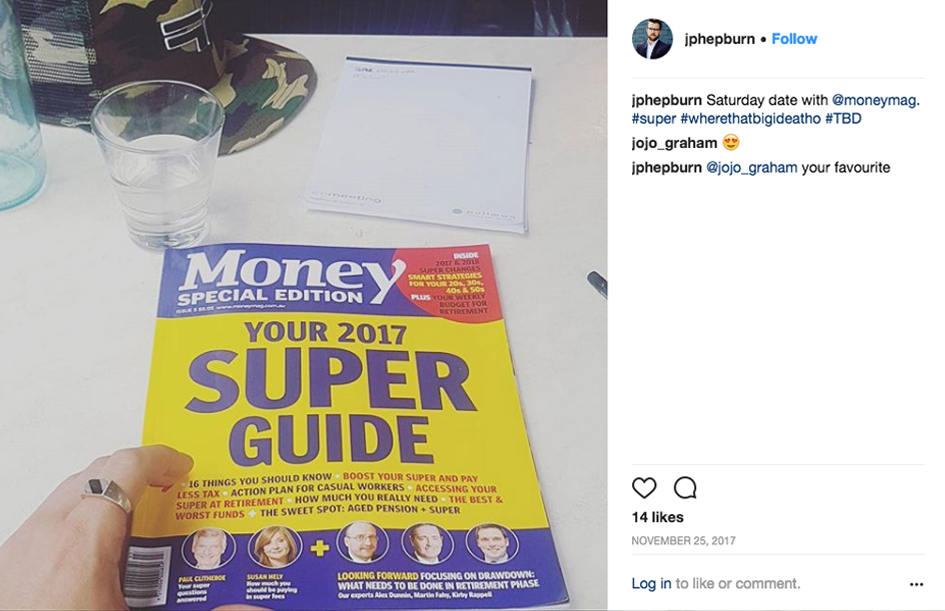
Zero to $20,000 Cash: How I Validated, Launched & Built an Online Business in 40 days
Read moreThis post is different to most I write. I want to show you the process I went through to take a business, that was a brand new idea, in an industry I’ve never worked in, to $20,000 in 40 days.
Let me explain exactly how this all happened:
So… let’s rewind to November 2017, when this all started with my good friend and coach – Zac Dixon. Zac is an incredible performance and mindset coach. Truly world class.

Zac from Zac Dixon Coaching I highly recommend everyone I know who needs help to work with him. You can actually check his content out here.
At the time, Zac and I were planning on running some events for the 2018 year. He was going to speak about Coaching and I was going to market the events for him.
To plan this out… I met with his girlfriend Angela, who helps Zac plan and manage his business.

Baci, Crown Casino – The cafe we met at We were having coffee late on a November afternoon – at Crown Casino in Melbourne – discussing these events, when she started telling me about her financial planning business – which she was in the process of selling.
During the conversation, we started talking about marketing and she told me that she had purchased $17,000 of leads one month from a lead generation company for financial planners.
I’ll never forget it. It was just a passing comment she made, and my eyes nearly fell out of my head.
“Whoa, whoa, whoa, whoa… whoa. Hang on, hang on, hang on. Explain that to me again?
Sorry, did I hear what you said correctly? $17,000 for leads?”
“Yes”. said Ange, “I’ll email you the information about it”.
Now… at the time, I knew nothing about performance, lead generation marketing or what we call “CPL Marketing”… so I was completely dumbfounded.
Ange emailed me a brochure from this Australian company. It outlined their process and how they generated live leads through Facebook.
They were selling leads for between $100 and $300 per lead. And this was for a minimum of 50 leads.
I couldn’t believe it, it was absolutely staggering.
Even now when I think about it… I still remembered being so amazed, despite now knowing that is a small quantity of leads in this industry.
I went home from what was an otherwise successful meeting and just knew I had to look into lead generation marketing. I knew I could generate qualified leads for tons less, and being a self-confessed marketing nerd, I was desperate to build something and test it.
I didn’t know this just a few short months ago, but this was the start of my next business. Now, my main skill set is writing sales copy. And I firmly believe a good copywriter is essentially just a good researcher.
They get deep in a particular niche or industry and they get to know it better than anyone who works in it. They understand the intricacies, especially in the financial sector, of how retirement funds and pensions work, tax laws and wealth creation.
Now… when it comes to creating a great marketing hook, I firmly believe that successful marketing comes down to one main thing:
“Showing someone how they can have a big win, with little to no risk or effort”
In the finance world, this means showing someone how they can make money, save money or reduce tax, without spending money on a planner, taking any risks or evading tax.
It’s that simple. Show someone how they can win without pain or effort, and you have their attention.
The best way to do this, is to take a concept that is already common knowledge, and create awareness around it.
For example: the reason we have financial planners or accountants, is to reduce our tax and risk, while increasing our wealth – amongst other things.
These experts know how to achieve this after many years of study, whilst we do not.
So when I conduct research, I look for any kind of benefit that a financial planner would tell their clients.
It might be the type of investment property to buy, hints on tax savings, bonds, stock or whatever – that the client doesn’t necessarily know – but is common knowledge, and use it as a marketing hook.
I’ll give you an example in just a moment…
When I started researching, I decided to begin with Retirement Planning and Superannuation. If you aren’t from Australia, Superannuation is what we call our retirement or pension fund. Essentially our 401k.
There was no real reason for starting this… but I just decided to pick a finance niche and go for it. I didn’t even know if the funnel would work.
Anyway, I started Googling around and learned the intricacies of our Super system…
A few days later, I decided to go to a news agent and look for something like Money magazine. As they are a news and media source, I knew they would have a better understanding of what people wanted to read about.
Now… I hadn’t been in a news agent for like 3 years, so what happened next was pretty crazy.
When I walked in, the first magazine I saw in the finance section was the Money Magazine Special Edition – Year 2017: Super Guide.
Instantly, I felt it was a really strange coincidence.
So I picked up that guide and spent the whole weekend reading the entire thing front to back.

Money Magazine: 2017 Super Guide After reading it, I realised there was almost a loophole that existed in the Australian Super system. It allows certain citizens to only pay 15% tax on their income by putting pre-tax dollars into superannuation – but only if they meet a specific criteria.
Now, it’s not exactly a loophole… because it’s common knowledge. In my marketing however, I called it a loophole because it has far more emotional appeal.
When you talk about a loophole or a secret, it draws people in. Because most people think they’re not rich because rich people have secrets that they hold from them.
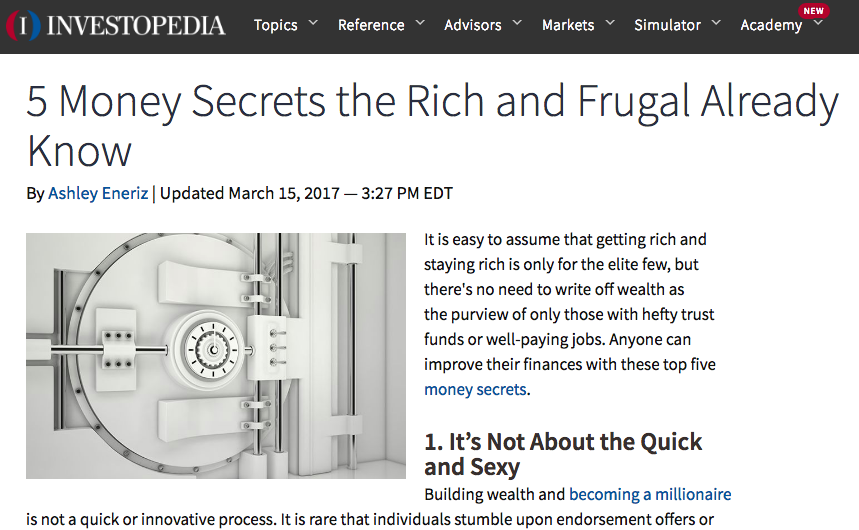
An example of Mysticism Or people that are toned and fit and have 6 pack ab ‘secrets’ or they’ve been lied to about how to be healthy.
People buy into this stuff, it’s called mysticism and it’s really powerful as a copywriter.
So… now that my research had resulted in a hook for my marketing campaign, I knew I had a solid starting point.
The big idea for the campaign was: “Is this Australia’s Biggest Super Secret?”
In terms of the strategy, I created a survey funnel to see if people qualified for this loophole. There was 2 reasons for this:
1) There is a specific criteria people need to meet to qualify. I didn’t want to generate leads that didn’t meet the criteria.
2) Making people qualify is one of the biggest psychological secrets there is. In a world of saturated marketing, people are far too use to being sold absolutely everything. But if you say they can get a benefit, but its only for certain people – it makes them very interested.
People want to qualify, they want to be special. It also game-ify’s the process which makes it more fun for the prospect.
Now – the criteria to qualify for this benefit isn’t super strict, but I wanted to legitimise the process by having a lot of questions. My reason for doing this was I wanted to have lots of data on each person, for the financial planner I intended on selling the lead to.
So I asked a bunch of questions in the survey like:
What is your superannuation balance?
How much unsecured debt do you have?
How many investment properties do you have?
Do you rent or own your own home?
What is your household income?
By collecting all this data, the lead became infinitely more valuable to my end customer – which was my goal.
Strategically, the funnel looked like this:

Strategy All of the pages were built in Clickfunnels. However – off the shelf survey software is very average. I found Clickfunnels software element to be buggy – so I ended up settling with Typeform.
Therefore, on the landing page I embedded a Typeform survey and once a prospect filled it out, they were redirected to the Clickfunnels Opt In Page I had built.
Once I built the funnel, it was time to test it.
I just started by spending my own money on ads to see what would happen… and I was amazed.
I was getting people to come right through the funnel and opt in. For cheap too.
After they completed the survey, they then had to enter their name, email and phone number into the funnel to fully opt in.
Finally I understood how the company Angela showed me was selling leads for $100 to $300 per lead. I figured I would trial my leads by selling them for about $100 a lead. That way, if a planner wanted only leads that met a certain criteria – like a minimum amount of income or super – the margin would still be okay.
As it turned out… that is exactly what happened.
Now that I was generating leads and had a product I could sell… it was time to get busy selling it. As always, I went straight to cold email. I’ve written an article on “The Ultimate Guide to Cold Email” that reveals the exact process I went through to generate qualified lead buyers. It’s super, super valuable for anyone that sells B2B.
In short, I went on to LinkedIn. I filtered everyone by my search criteria:

Sales Navigator on Linkedin Once I got this list of Australian based Financial Planners, I used Anyleads to extract the data from LinkedIn and get their email addresses.
Now that I had the list, I used Gmass and sent them this email:
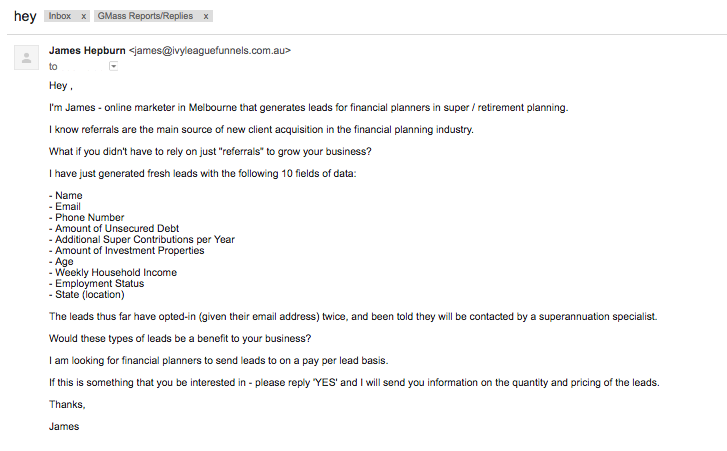
This is the cold email I sent to Financial Planners It basically said:
“Hey, I’ve got these leads. This is the data I have for them. Let me know if you’d be interested in them.”
When people replied yes, I would explain more about the process and we would organise a time to chat.
An important thing to note here is – I don’t consider sales an overly strong skill of mine. But when I got on the phone with these planners, the leads sold themselves.
I’ve said it before and I’ll say it again, nothing beats having a killer offer.
I also decided that planners had to buy 20 leads as a trial. The reason for this was I wanted to make sure they had a decent sample size to test them.
I didn’t want a planner to buy a small quantity of leads and either, have an awesome experience that wasn’t indicative of a normal batch – or have a bad one, for the same reason.
So, in December 2017, I sent out about 300 emails with the offer above. I got tonnes of replies. Planners wanted to chat and hear more about what I had created. On top of that, I built a buyers marketing funnel advertising the leads I had for sale and ran traffic to it.
I brought on a business partner, Jesse, who handles all of the traffic for the business. The buyers funnel was actually his idea. It worked well and we generated 10 leads from that for about $20 each.

Ad Manager Screenshot for Financial Lead Buyers I rang all of the leads I had generated through cold email and Facebook. Most planners said the same thing: “We’re definitely keen, but it’s the end of the year and we are winding up. Ring me in January.”
Before 2017 ended, my calendar was booked out for 2 weeks in advance with sales meetings. I also had a trip scheduled to Sydney where I met with 2 buyers and my software developer – who ended up building me a custom funnel – but more on that in a moment…
I had one buyer from Perth come on in December. He was ready to trial the leads, so we sent him some immediately.
Making your first sale in any business is so important, because it builds your belief. Once you get validated and you know what you are working on is possible, it’s a huge step forward.
In December, we banked just shy of $2,000. And by the end of January, we had surpassed $20,000.
When January rolled around, it was mayhem!
The best kind of mayhem…
Our Perth buyer reordered some leads and I brought on a buyer in Brisbane, Sydney, Adelaide and 2 in Melbourne in about 2 weeks.
We now had 6 buyers and we were only 2 weeks into the year. We had a few more we were speaking with.
After that influx of buyers – I noticed we had issues with our weak infrastructure and the way the funnel was put together.
As I write this now, at the end of January – I’ve slowed down our buyer acquisition and I’m in the process of refining our systems.
As I mentioned earlier in this piece, the initial funnel I built was rough. I only intended to build it as a test and it just happened to take off. When I went to Sydney to meet 2 buyers in early January, I met up with a good friend who is a marketer and developer. He built me a custom coded Funnel that stored all the data in once place.
We also added some crazy features to the new funnel. Instead of multiple choice answers, all our questions had sliders to get the exact value:

The Funnel had Custom Sliders Added The biggest update we made was text verification.
At the end of the funnel, every lead that opted in for a call got sent an SMS. They then entered the verification code from the SMS into the funnel, to verify what they opted in for – which made a huge impact on our lead quality.
So – as you can see. This is the process I went through to come up with a new business idea, validate a concept and bank $20,000. At this stage, I have slowed down our growth and am focused on improving systems and product quality. Just like any business, some of our customers got great results with the leads, and some not so great.
I’m just working on continually improving the lead quality. I want to expand this into a million dollar company in 2018, so join me on this journey.
It’s going to be really exciting.
-

The Ultimate Guide to Cold Email: 6 Step Process to Generate 4 & 5 Figure Clients Without Spending a Single Dollar on Ads
Read more$30,000 in Funnels and Marketing Retainers?
$20,000 in Sales testing a new Lead Gen Business?
I’ve done them both.
The #1 Weapon for Client Acquisition in the B2B World is without a doubt… Cold Email.
It actually sounds crazy saying that… because I’m a Facebook guy. I’ve spent way more money, time and resources on that platform.
But, as any marketer worth his weight in gold will know – you must always be willing to test new things and innovate.
Now, I can’t quite remember when or why I thought cold email would be a good idea. My memory is shocking these days…
But the point is, I decided to start testing it. Very quickly… I discovered I was sitting on a gold mine and had to explore it further.
Now – after running direct response and lead generation based marketing for 3 years, I know how important strategy is.
I always find it funny when people tell you a certain marketing channel doesn’t work, but then when you see their strategy you can totally understand why.
Cold email, by nature, is somewhat intrusive. It’s important to recognise this up front. If you want the recipient to take some kind of action, you need to give them something in exchange.
This is the biggest mistake people make.
They cold email asking for an appointment. Now, can this work? Of course… and it does work.
But all it says to the prospect is: “Let me tell you why you should buy my product” – which is silly.
You will need a ridiculously good offer for that to work well.
Instead – I offer value. Either a case study, or training or review of their website. In exchange for that, I ask for the opportunity to discuss it with them further.
Anyway – I will explain this in more detail below. For now – here is my 6 step process to generating clients and business opportunity through cold email.
Step 1: Clearly Define Your Target MarketThis almost goes without saying – but it still needs to be said.
You must make sure you are targeting a very specific market. The clearer you are on this the better.
Why? Well… here’s the thing about email, and for that matter – communication in general.
The more specific you are – the better your response rate will be.
This is as true in cold email as it is in broader life.
For example – go up to a woman you think is attractive and tell her she is: cute / pretty / beautiful etc.
It may work… it may not.
Tell her you love her strong sense of fashion, her style, the way she does her hair, how you love the colour of her eyes.
In most cases, holding everything else equal – the more specific your comment, the better your results.
Cold email is no different…
Asking for an appointment vs telling a financial planner 3 things you noticed on their website they can improve, and offering them a case study that shows how they can generate better results from their Facebook marketing – are like chalk and cheese.Now… this market can be anything you want, and it should be dictated by what you already do with your business. But as an example, you can choose to target:
1) Financial Planners
2) Real Estate Agents
3) Dentists
4) Plastic Surgeons
5) Personal Trainers
6) Massage Therapists
7) Ya Mum
Whoever.
Just fully understand one market and know:
– Where are they currently at on their journey?
– What are they struggling with?
– What would they need to see from you to believe you can help them?
Knowing this will help you build out everything you need so the campaign is successful.
Step 2: Get Clear on your Goal & Numbers
If you want to use Cold Email, understand like most parts of business – it’s purely a numbers game. Whilst you’ve probably read articles about people sending 1,000 or even 20M emails – you need to get clear on what you want from it.
I always say to people – don’t take my word for it, send 100 emails and prove this process works for yourself.
Make a sale, and then go from there.
But when it comes down to it, I often get asked with Cold Email:
What are typical response rates?
How many people will I sell?
The reality is, it totally depends on your market…
– How many people open your emails
– How good the offer is
– How accurate the email list is
There really is no one size fits all.
I’ve had campaigns where I’ve sent 40 emails and generated 7 replies, but then we closed 3 new clients on $5k for a funnel and a $5k retainer.
Similarly, when I launched my lead gen business, I sent out over 500 emails, got lower overall response rates, but generated $20,000 in revenue in the first month’s test.
As a general rule of thumb though, reverse engineer the process.
Let’s say your goal is to generate $20,000 per month, and you run Facebook ads for a $2500 / month fee – then you’ll need 8 clients.
If you convert 1 out of every 3 strategy calls, you’ll need 24 leads.To get those 24 calls booked in, as I mentioned, the number of people you need to email will vary based on industry.
Generally speaking, I aim for at least a 5% reply rate. Therefore, if you send 600 emails, 30 people reply, and then you actually get on the phone with 80% of those, you will be able to get 8 clients.
Knowing the numbers makes a huge difference and takes all emotion out of business. Crucial stuff.
Step 3: Create an Irresistible OfferYou’ve probably heard this one a million times before. But when it comes to Cold Email – we are talking about totally different beast.
As I mentioned earlier, to get something from a complete stranger, you need to offer a significant amount of value.
There are 2 ways to create an offer that the market will be dying to receive. The good news is, both are incredibly simple.
a) Free Trial
Understand this. If you directly offer your ideal client exactly what it is that you are selling, and they desperately want it – they will say YES. That’s how business works.For example – my main company is a Lead Gen business for Financial Planners. I literally send an email to my target audience that looks like this:
“Hey – I’ve got leads with 12 fields of data. These are the 12 fields: name, phone number, email, employment status, income, investment status, home ownership status etc. Would you be interested in these?”
How many people do you think say “No”?Not very many.
This similarly works if you have a software you provide, or a service you can let someone trial, either for free, at a discount, or in the case of the leads I sell – my normal price.
It’s very straightforward.
b) Case Study
This is the more popular choice for most marketers / service providers. The biggest thing that sells, is results.
That’s ultimately what people are buying.
So… if you are claiming to be an expert in a field to someone who doesn’t know you… you better be able to prove it.
With the list of people you have in the market you want to target, send them an email offering them your case study.
This case study can be just a 5 minute video, outlining the funnel / process you went through that create the result they want, for another client.
Then all you need to do is send them an email and ask if they want it. In exchange for the case study, you ask for a phone call to discuss it with them.
It goes a little something like this:
Subject line: hey / <name>
“Hey <name>,
I’m <fname> from <company name> where we specialise in <insert thing you specialise in>.
I’ve just finished putting together a 5 minute case study video that reveals <the massive result you got for a client that was in the exact same position they are currently in>.
Inside this video, you’ll discover:
– <massive benefit one: the single marketing campaign I implemented that generated $100k in revenue in 9 days. HINT: Its way simple than you think>
– <massive benefit two: the sales script I gave to the sales team that increase their conversion rate by 55%>
– <massive benefit three: The 9 word email virtually any company can use to revive dead leads on their email list and generate a 400% ROI>
This is literally some of the best work I’ve ever created – and the good news is – no one else in your industry knows about it… for the moment anyway.
If you want a copy of this video – just hit reply and say YES. All I ask in exchange is an opportunity to go through this with you on the phone when your schedule permits. Trust me, there’s a few things that I didn’t include in the case study you’ll want to know.
Regards,
<fname>”Step 4: Generate an Email List
By now you are probably thinking: this all sounds fantastic… but where am I getting this list of emails from?
Great question. I wasn’t going to bring you all this way and send you home without some cookies.
Whilst there are probably a myriad of tools you can achieve this with, I use Anyleads. (www.anyleads.com)
And no, I’m not affiliated with them in any way, shape or form… probably going to regret that after posting this.
Basically, Anyleads takes data from Linkedin on any target market you want to know about, and scrapes it – providing you with name, email, company etc. Everything you would ever want to know.
There is a process you need to implement to make this work:
1) Install the Anyleads Google Chrome Extension
2) Login to Linkedin and Create a List
This is much easier if you upgrade to premium and use sales navigator, as you can get far better information. Grab the 30 day free trial and you will make sales before it ends – I guarantee it.
When you open Sales Navigator, type the keyword you want to target on the left. I entered “financial planner” for my lead generation business.
Then I select the filters I want:
– Geography: Australia
– Relationship: 2nd & 3rd + Connections (because I already have first through my profile)
– Industry: Financial Services
– Company Headcount: 11-50 & 51-200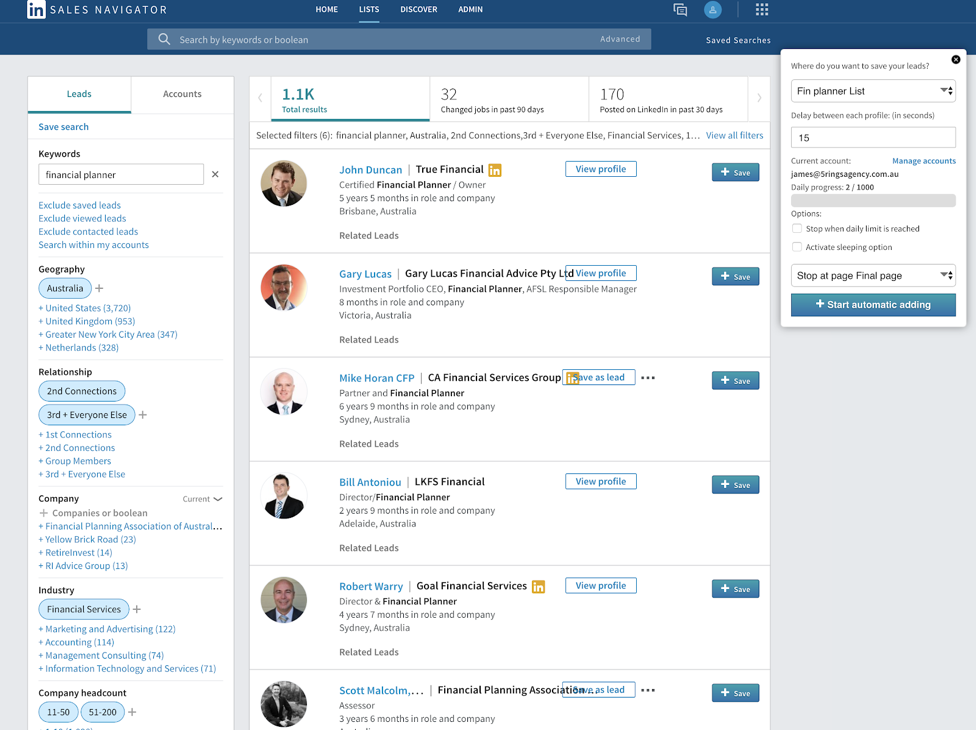
On the right side of this image, you can see the pop-up box, which is displayed courtesy of Anyleads. At the top, I can select the list within Anyleads that I want to save my leads to. Which looks like this in the backend:
You can see that “Fin planner list” is my default list. When I click “start automatic adding” on the Anyleads popup box, it will cycle through every profile in the search of Linkedin, and add their information to my Anyleads list.
Yep… it works like magic. Once Anyleads collects this data, you can then export it as a CSV and move onto step 5.
Step 5: Verify the Emails
To verify emails, I use Email List Verify. Why? Great question.
There is no reason… I just use it because it works. Here’s what to do:
Upload your emails, clean the list, and then download what is left. The reason you need to do this is to keep your domain clean and minimise the amount of emails you send that bounce. Do it too many times and you’ll get your domain blacklisted.
Trust me – you don’t want this to happen.Step 6: Sending the Emails
Whilst you can send emails from inside Anyleads – I generally use google sheets and another Chrome extension called Gmass.
It’s very basic, which is great for getting started.
You will now have a cleaned list of emails. Sort through it so you have the list of names in one column, and email addresses in the other column.
Once you’ve done that, copy and paste all of the data into a new Google Spreadsheet. Install the Gmass chrome extension and then open up Gmail.
Click on the red button that appears next the search bar, and the following screen will appear, prompting you to setup Gmass.
Once you login to your google account, you will be presented with the following options. Select the Google Sheet you just pasted the data into.
After you’ve done that, the email addresses you want to send to will appear in the send field of a new email. You can now paste in the email you are sending so everything is ready to go.
Always send out a test email, that way you can be guaranteed everything looks right and is working, before you send it to the prospects.You can use mail merge to, if you want to customise each email for the names you have – to make every email more personal.
Now, it has been proven that if you follow up with those who didn’t reply the first time – you will get a better response rate. It’s true.
I also believe however, that you are far better off spending your time on getting a high quality list, than just sending out as much email as possible trying to get anyone to respond.
Quality over quantity. The gold – or in this case – the money, is in the list of people.
Remember that you will only go as well as the quality of the people your message lands in front of.
Once you do get replies, send through the case study you promised them and ask for the best time to call them. When you get on the phone, take them through the normal sales process you would to onboard any client.
That is my entire process. Start to finish. It’s taken me many years, a lot of money lost and a tonne of research to understand how to make that work.
I just gave it to you for free!
I would love to hear your thoughts and questions in the comments.
JH -

One Single Sales Letter, a $400,000 Side Business and 13 Tough Lessons: The Ivy Dance Floors Update
Read moreToday, I want to talk about the 13 lessons I learned from building Ivy Dance Floors into a $400,000 side business. I’m going to talk about everything from the sales letter I wrote, to how we approach competition and the mistakes we made.
I even talk about the wars I wish I started – but I’ll get to that in just a moment.
This business is something I’m incredibly proud of. In a lot of ways, I feel like its my Superbowl ring. You see, when my brother Geoff and I started this business, we were in a position where we were financially in a hole for more than $200,000.
No joke.
We were running a business that was heading under – yup, towards bankruptcy… and we reached a critical point where we had to make a decision.
Do we invest our time and resources into growing that business? Or were we going to do whatever we could to make money.
If you’re reading this, I hope you are never faced with this decision. It was an incredibly stressful time in my life. In saying that – I’m totally grateful for it. I wouldn’t be who I am without it.Luckily, we took the second option… and it turned out for the better.
Because once we got out of that business, which I’ll talk more about in this post… Let me get straight into it – here are the 13 lessons I learned:
#1 – The Power of a Good Offer
In 2014, my brother and I ran a business called The Bicycle Store. It still runs today.
And it’s not that it necessarily had bad offers, they were just the same products as every competitor. When we started selling vinyl dance floor, which you can read more about here, we were only competing with about 4 suppliers in Australia.
But we had something unique, the exact same product as our competitors, but for significantly less money.My mum wanted this vinyl flooring in her studio. She’d been quoted $7,500 for 110m2 delivered to her studio in Canberra. I got the same product landed in her dance studio for $2,250.
When she was really happy with it, I had an epiphany…. and to quote Jeff Bezos – “Your margin is my opportunity.”
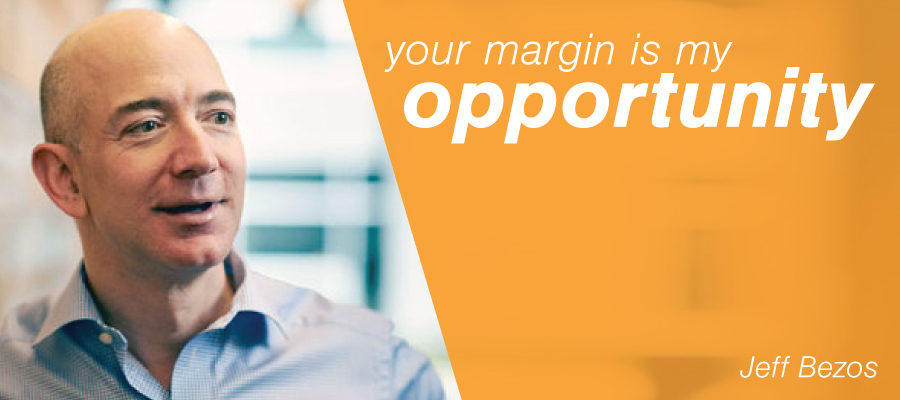
That $5,250 margin difference was our opportunity and if we wanted to – we could take on every competitor in the market. Even though every competitor was an established brand, there was a lot of room to play.Naturally, when we started pricing our product at $25 less per square metre, we instantly had interest in our product and generated sales.
So, never underestimate a good offer.
It might be the price, benefits, risk reversal, features or uniqueness. But at the end of the day, your customers are buying the actual offer.
Nothing else will compensate for it.
#2 – Good Marketing is King
Having an offer is great… but how are you hooking people in?
How are you attracting them?
How are you polarizing the market?
How are you creating a message that really gets them excited about what you’re doing and gets attention?Something I did very well in this market, is that I created attract & repel marketing.
I went out with a very strong marketing message and stated what I believe to be true: every supplier of dance floor in the Australian market was, and still is, ripping off their customers.
You know, most dance studio owners are like my mum.
They’re just mum and dad operators who don’t have a lot of cash and teach dance because they love it. And I just firmly believed they were getting ripped off.So my marketing message was shaped around that. The first campaign I ran was called:
“The Harsh Truth About Vinyl Dance Floors”
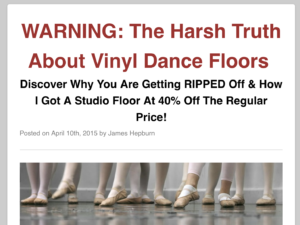
Good marketing polarizes an audience.
It brings in the people you want and repels the people you don’t want. I wrote our first sales letter as a story about me, with my face and name attached to it. It was a very aggressive and controversial message – which you can read here.
Now… that’s on the internet forever. And I don’t have any issue with it.
When I believe in a cause, I’ll sing it from the rooftop – just as every business with a great product should.
Good marketing is crucial. Polarise your market. Attract the customers you want, and repel those you do not.
When you have good marketing, you’ll be a market leader.#3 – Margin is Important
Before we started Ivy Dance Floors, my brother and I ran an online retail business on the Magento platform.
Not only were the margins horrendously bad, but our overseas competitors could sell the same products as us at retail for cheaper than we could buy them wholesale.
It was pure madness. We were in a price war and we got absolutely slaughtered.
When it came to Ivy Dance Floors, we could produce a high quality product for a low price in China. This meant we could maintain a good margin and still provide cheap prices to our customers.
Having a good margin isn’t just about making money. It’s about funding your growth and making sure you can survive times in business when your sales and cash flow are sporadic.Some months we’ve made great money, some months we haven’t. But having solid margins allows you to pay for expenses and reinvest in stock and other assets.
To summarise – not having a decent margin will choke your business.#4 – Validate an Idea before you Spend a Cent
It definitely helps when your mother is your ideal client.
Our mum was our first customer, so we bought the product for her dance studio in Canberra. 3 years later – it’s still there.
On the Easter long weekend in 2015, we installed it. This was around the time the business kicked off. Once mum approved of it and loved the product – I knew there would be hundreds of other studio owners lining up to buy it.So, I wrote an ad and put it on Gumtree. Said, “Hey, I’ve got 20m x 1.5m rolls of vinyl dance floor, it’s $1,200 per roll.”
Almost instantly, people started to eat it up. I got like 5 calls in a week.
At the time, I didn’t even have any stock. I just said, “I’ve sold out. We’re ordering some in. I’ll ring you when I get it.”
Because I got that proof, I went home and wrote this sales letter you can read, and that’s still running today – 3 years later.A week later… emails started flooding in. We were so broke at the time, it was like a beacon of hope. I’ll never forget it:

When it went live, I had people emailing and ringing my phone off hook – all interested in it.Given how broke we were at the time, we borrowed about $4,000 from our parents and imported 10 rolls.
Sold the 10 rolls for $12,000 within the first week of receiving them. Paid our parents back and the business took off from there.
The key is however – validate the idea you have before wasting money. Trust me, from having done the wrong thing many times – it’s far more expensive that way.#5 – You are One Sales Letter Away
I could talk about this all day.
Russell Brunson talks about being ‘one funnel away’. And I actually hate that, because it’s such a fantasy for most people. But it’s the same with sales letters.
When I first got into writing copy, everyone talked about being one sales letter away from a million dollar business.And the crazy thing is… it’s true.
One of the reasons this business hasn’t grown more is because it’s always been a side hustle.I run my marketing company. My brother runs an electrical company. But the reality is, it could be a much bigger business.
And one of the main reasons, is this sales letter I wrote. Here’s and excerpt from it:There are 5 key reasons this worked well – they are:
#1 – Everything I wrote in the letter is true. Whilst its opinionated, it’s very hard to disagree with.
#2 – It’s very controversial and polarizing. By the time you get to the end, you are either going to love me – or absolutely hate me. I’m fine either way. I know my truth.
#3 – I told a story that elicits emotion from my market. I justified their failures and allayed their fears. Very important when you want to convince someone why they should work with you.
#4 – I made them an absolutely killer offer. Our dance floor is like 40% cheaper than out competitors. As most studio’s need a lot of flooring, this results in a saving of thousands.
#5 – I had proof to back it up. There’s testimonials on the page. At the start it was only a handful and I probably need to add more. Over time I added the company introduction video to build more trust.If you can find an underserved niche and present to them a new opportunity, a way to generate the results the way with a huge benefit, and you connect to them authentically – you literally can’t lose.
#6 – Don’t be Cheap
This is a true story. It’s kind of funny, although very serious, and a great lesson.
When we were living in Sydney, we had storage space below our bike shop where we stored stock.
When shipments of Dance Floor came in, Geoff would hire a truck, pick them up from the dock and bring them back to our shop.
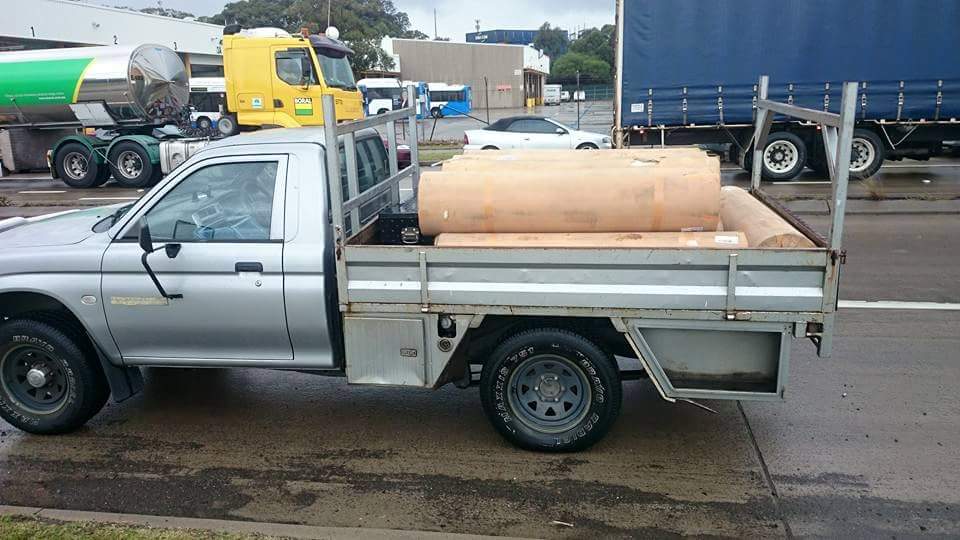
As we soon learned, we would have been far better off paying a transport company to deliver the stock to us.
But we were so broke at the time we would do anything to save $200 – $300.
Anyway, so one day in the middle of 2015, Geoff went to pick up the second load of 70 rolls we had ordered in – around 7 tonnes of cargo.
He tied it all into the truck but when he took off, the actual pallet the rolls were sitting on snapped and the dance floor flew out all other the road.
6 rolls were damaged.
He called me and said, “I need you to get down to this intersection asap. Shut the bike shop. Come.”
I raced down there, and I remember Geoff was in the back of the truck trying to hold the rest of the rolls up to prevent more from falling out and getting damaged.
When I got there and jumped in the back, we were moving the rolls around to re-order them, when one roll fell over the side.
Geoff just reached out and grabbed it, and as he held onto it, a scooter rider came around the corner and rode past. Had Geoff not stopped itl from falling, this 100kg roll of vinyl floor would have hit and probably killed the guy on the scooter.So, we were lucky nothing happened and there was no more damage done. But, yeah, don’t be cheap. That’s one of many examples in business. The dearest way is the cheapest way.
#7 – Don’t be Addicted to a Fantasy
Business is hard. There’s no doubt about it. And I’m not trying to make it seem easy with these headlines I write, or any of the content. It’s hard work.
We were lucky that we had all the warehouse space and didn’t have to pay any additional rent when we launched.But lucky is a relative term. We were also in a lot of debt, under a tonne of financial pressure and living with a lot of stress.
I wouldn’t wish it on anyone, but it made me who I am, and put me in a position where I can do what I do today.
Even now, whilst the business has done well financially, we’ve never made a cent from it.
To be fair, Geoff runs the business these days. I’m very passively involved in it and happy for it to be that way.
I started it, launched it, made all the first sales, and was heavily involved for about the first $100,000 of revenue.
But all the money that we’ve made has either been reinvested into the growth of the company, or to paying off debt from the bike shop.We took massive risks along the way too.
After we ordered sold the first 10 rolls, we needed $25,000 to get 70 rolls and Geoff rang a friend who had money and asked him for a loan if he could pay him back at a premium.
Luckily he agreed. But it was a crazy risk at the time when we already had a lot of debt. Geoff was never worried about it thought, he backed what we were doing and has a really solid appetite for risk.
But anyway. Don’t romanticise with entrepreneurship. Business is difficult.
#8 – Direct Response First, but Brand is Important
Everything I do in marketing is direct response with the intention of driving a monetary ROI whether its a sales letter, content piece or video.
I’m always trying to elicit an emotional reaction from my audience and drive them to take action, whether that’s buy, enquire or even engage in my content. It’s crucial. If you’re not running direct response marketing, you’re wasting time and money.
But also understand that brand is important.We’ve sponsored dancing events and competitions, been featured on magazine covers and even ran ads on dance media websites. We actually had an ad get banned because our competitors complained.
Unfortunately I wasn’t surprised, as usual my ad was aggressive and controversial.So always remember – direct response is king, but brand is important. We got exposure from some of the branding we have done, that helped get our name out in the market.
And whilst it’s hard to measure the ROI of that, I have no doubt people discovered who we are from the things we’ve done.
#9 – Be Careful with Names
When we started out, we called the business Ivy League Dance Floors – which is a name Geoff came up with. Ivy League was from the top 8 American Colleges: Yale, Stanford, Harvard, Brown etc.
We liked the eliteness of the name and thought it was a great branding play. I actually named my marketing company Ivy League Marketing not long after.
Well… that was until we got served a cease and desist letter by the Ivy League Corporation in the U.S. for infringing their trademark: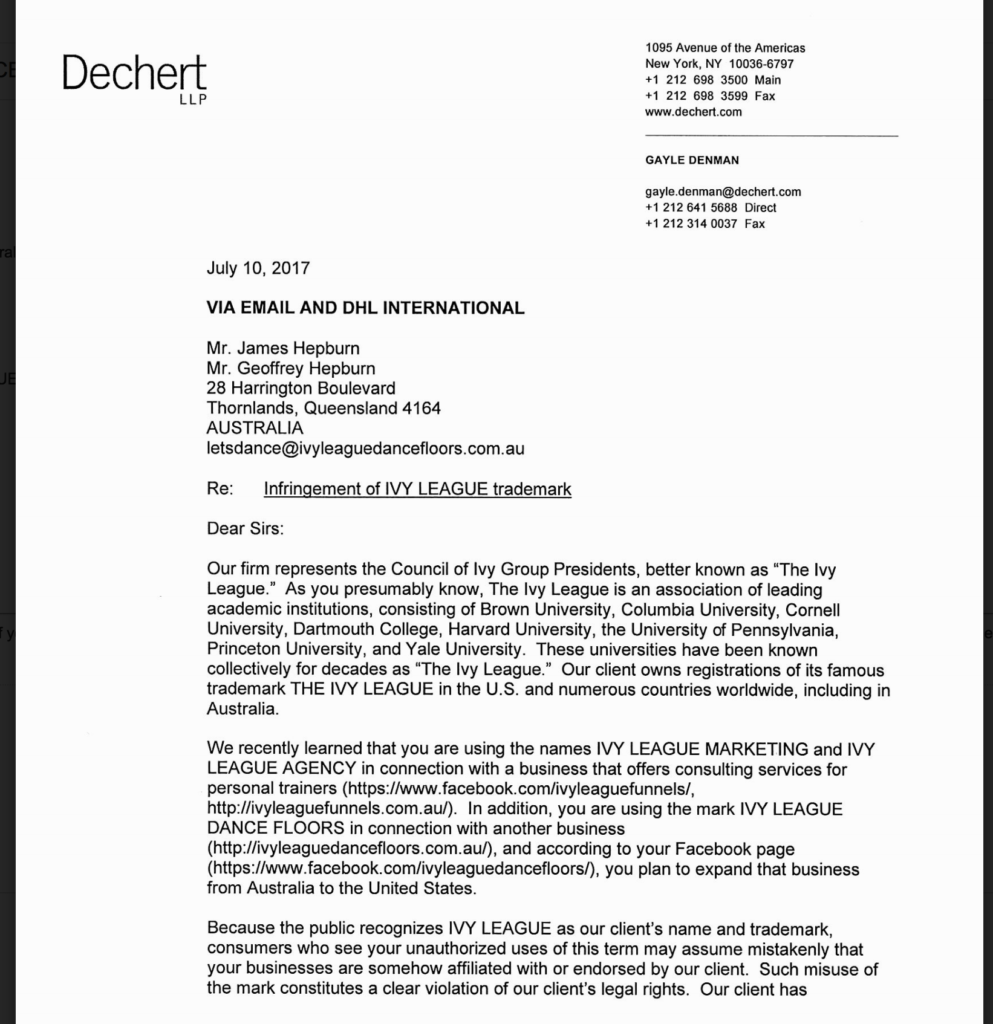
So, be careful with names. The business is now called Ivy Dance Floors. This could have been significantly worse if we had to change to a totally different name after working hard to build the brand.#10 – Don’t Worry about Websites and Shit that Doesn’t Matter
We had no website for probably the first $50,000 in revenue. Then we just built one that was absolutely terrible.
Geoff’s just had a new one built. Which for the record, I have written no copy for. I feel the need to heavily express that.
Don’t worry about websites or anything like that. It does not matter. Do you have something valuable that your market will pay you for? Then sell it.
We had t-shirts and business cards made once we started sponsoring events. But even then, we would spend a few hundred bucks on basic stuff once we’d made $50,000 to $100,000.Majority of business owners worry about this stuff far too early.
The very first thing I did was test the product with my mum and write a sales letter to make money – because that’s all that matters.
#11 – Share Results
Always share the results of your customers publicly. One thing Geoff does really well is posts photos of every single install he does on our Facebook Page:It’s just further proof that shows our market we’re actually out there doing it.
We’ve supplied over 50 dance studios now and have a tonne of customer proof. Its really important to share the results your customers are getting.
The floor looks amazing every time its installed – which helps sales just as much as the first letter I wrote.#12 – Keep the Product Offering Simple
From over $400,000 in revenue, we’ve only got 2 products.
In fact, It’s the exact same product – our 4mm thick vinyl dance floor – but it comes in two colours; grey and black.
The biggest mistake I see people make is they offer too many different products when they have no revenue.
Find one good offer for an underserved market, and you don’t need to sell anything else. Not until you starting making bank anyway.
#13 – Starting Wars
I strongly believe that every good business stands for something and has an enemy. For Ivy Dance Floors, our enemy is our competitors but not in a traditional way. They’re the enemy because they’re ripping off hapless dance studio owners.
Ivy Dance Floors stands for the mum and pop dance studio operators – just like our mother. The people who want to create an awesome environment for kids to learn dance. They aren’t necessarily trying to make a million dollars – but if they do, more power to them. They run a dance school because they love it.
They are the people we cater for.Apple – a truly great business founded by Steve Jobs – is about going against the status quo. We’re for the square peg in a round hole. The troublemakers, misfits and rebels.
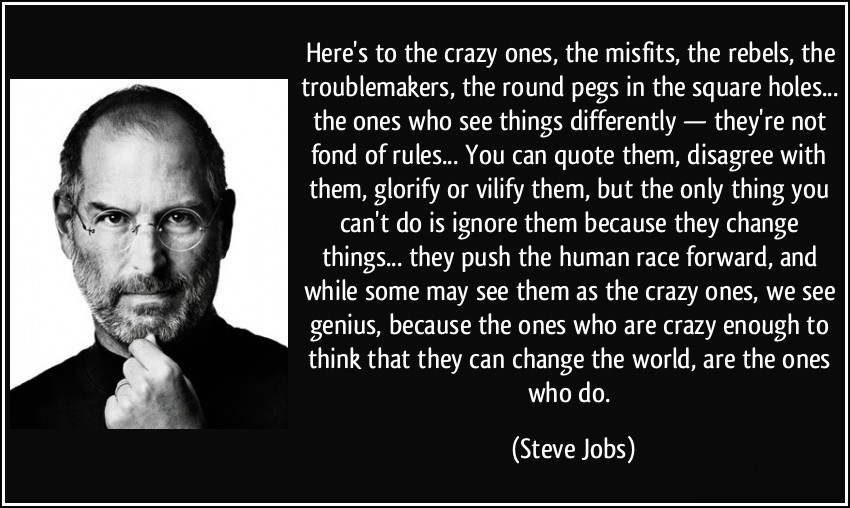
The Entourage, an education company for entrepreneurs and business owners, fight a war against traditional education. They want to help empower entrepreneurs to live a live on purpose.
Kogan, the online retailer, are a rebel upstart against traditional bricks and mortar retail businesses. Kogan took out full page newspaper ads against Jerry Harvey and Harvey Norman.Ruslan Kogan did crazy stuff that I probably wouldn’t do. All because his business had an enemy and he wanted to prove a point.
It’s so important to start wars. They show the market who you stand for and who you are against. It creates controversy, polarity and entertainment… all which gives your business more attention.
Very early on in this business, when I launched the first sales letter… the general manager of our biggest competitor rang my personal phone and pretended to make an enquiry.
When he told me his address and asked if I could send him a sample… I knew exactly who he was.
So I just called him out on the phone, in a non threatening way, and said, “I know exactly who you are, and I know what you’re trying to do”. He hung up the phone and rang me back 30 minutes later and asked for a sample… because we had got a sample from them earlier on.He was actually really nice. But for some reason, I backed down as a result of that – which I regret.
The reason I didn’t press harder at the time was… I didn’t want competitors knowing what we were doing. We were very, very small… and this was early days. Whilst Geoff was totally unaffected by it, I wanted to take the business offline more, and do direct mail.
The reason direct mail is great is – no competitor knows what you are up to.
So anyway, we pressed on. But at the end of 2015, my first mentor Mitch Miller came to Australia and I told him the story.He called me out on not, what he called, “starting a full blown war”. Mitch told me the biggest mistake I made was not putting my foot on their throat and calling out every competitor.
He told me:
“Creating a controversy about how your biggest competitor was challenging you would have created a giant talking point in your industry and the business would have exploded.”So, you live and learn. I don’t regret it. Being controversial is tough… if you wanna get in the kitchen, you need to be ready for the flames.
Anyway… this one was pretty long.These are the main 13 lessons I learned from building a $400,000 side business from one single sales letter.
Hope you got something out of that. Enjoy.
-
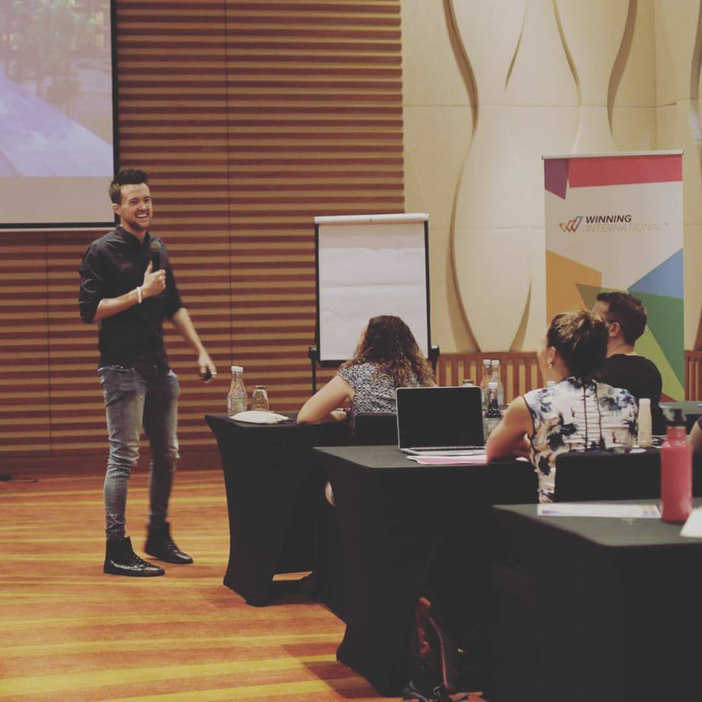
5,170 Leads, 302 Strategy Calls and $132,500 in Sales: The 1,2,3 Knockout Funnel for Coaches
Read moreThis is an article I’ve been pumped to write for a while. If you want to see how you can produce an incredibly simple, 2 step funnel that literally prints cash… read on.
Before I get into the nitty gritty, let me explain how this happened…Backstory:

Speaking in Phuket, Thailand It was November, 2016 and I was speaking at a marketing event in Phuket, Thailand.
At this event, I met Leanne from Mind Over Muffin. She had a 1 on 1 coaching program to help women overcome emotional eating.
Now, at the time, her program was $3,000 and it went for 8 weeks. She would get on the phone for a 1 on 1 session, once per week with each client – which as you can imagine – was a massive drain on her resources.
When we met, I told her she needed to move her $3,000 program to $5,000 and create a leveraged group program for $3,000.
She would provide one webinar training per week and a Membership Site to deliver all of her content.
Initially, she was a little bit freaked out by this massive step up in what she needed to do.
But to give her massive credit – as she is a large part of why this campaign was so successful – she took it on board and did the one thing that most people never do… she took massive action.
When I arrived back in Melbourne in December 2016 – we started working together. 12 months later – the SAME campaign was still running and producing incredible results, which were:
– 5,165 Leads
– 302 Strategy Calls
– $21,352.82 Ad spend
– $132,500 Sales
All of this, from a program she hadn’t even created when we met. She also kept her 1 on 1 clients at a higher price and has since started running exotic retreats in Bali.
Pretty cool stuff.
So… maybe you’re a coach wondering how you can generate qualified strategy sessions?
Perhaps you have a different kind of business and you’re looking for inspiration?
Or, you could be another marketer looking to steal my work for free calling yourself a “funnel hacker” so you can make money with it…
Either way – read this blog to the end and I’ll share with you exactly what I did, so you can achieve similar results.
1. Strategy
When it comes to generating more leads and sales with marketing, strategy is incredibly important. Far too many people, are attempting to sell their offers and programs to cold traffic – as in, people that have never heard of them before.
With the correct strategy in place and the right marketing funnel – it’s possible to convert cold traffic with your offer.
So… when I start to develop a strategy – we get crystal clear on the end goal. “What do we want to achieve with this marketing campaign?”.
In this case, Leanne wanted to make sales into her $3,000 group program. In this program, Leanne helps women overcome Emotional Eating, and teaches them how to deal with cravings, and make the right food choices, so they can have the body of their dreams.
Leanne helped women under 40 in Australia achieve a body transformation through her program. As I had experience with this market from the webinar funnel I built – I was already ahead of the game.
I knew this would be a really good market to target on Facebook, and I also knew we could generate quick results.
This time however, I decided to go for a different funnel strategy. Instead of using a webinar, I decided to make a simple opt-in funnel, where the prospect could book a call with Leanne directly on the second page.
Now… why did I do this?
Simple.
1) By creating a new program for Leanne and increasing her prices dramatically, I was already stretching her out of her comfort zone somewhat. I knew there were other ways to generate great results without her also having to learn how to create a webinar and close attendees into a call.
2) This would be much faster to build. As always – nothing is guaranteed in marketing. I wanted to test a simpler to funnel to see if we could generate sales – if not, we could do something else. But if we did… we could scale it and drive massive revenue growth with minimal hassle.
So – here is a diagram with the funnel structure. As you can see, it’s quite basic:
Marketing Funnel Strategy
I call it the 1,2,3 Knockout Funnel for Coaches because its just 3 simple steps.Now, whenever I create a Marketing Strategy, I will always breakdown the metrics so I know what I’m aiming for. This is a process I learned from my good mate Ricky Baldasso from Metric Driven Marketer – if you go here you can check out his funnel ROI calculators.
So… whenever I have a strategy session funnel, I will typically aim to pay $100 for a call. However, in this case, my expectation was to pay $50 per call.
Why is that?
Well, for starters, the person opting in for the call didn’t need to go through a full application process, like they did in Niyc’s funnel here – which did $100k in sales in the first month.
As the level of resistance for the prospect is lower, I expect a higher conversion rate.
On top of that, the niche is much less competitive than the business coaching / consulting space, so I know I can get away with a much lower cost per call.
So – with a goal of $50 per call in mind, I calculate the rest:
Cost Per Strategy Call = $50
Strategy Call Page Conversion Rate = 10%
Cost Per Opt In = $5
With this I had my goals.Essentially, this means I can afford to pay $5 per lead on the front end of the funnel, as long as I convert 10% on the second page – I will hit my goal.
One thing to note here is, I always tell my clients that the goal of a marketing campaign when you sell a high ticket product (over $2,000), is to generate a 10X ROI on your marketing spend.
So – if you sell your program for $3,000, you can afford to spend $300 to acquire a client and still make 10X.
If you can spend $300 to acquire a client, and you pay $50 per strategy call, you only need to convert 1 in 6 to make 10x.
If you convert 1 in 3, you’ll make 20X. But if you pay $100 per call, you MUST enrol 1 in 3 people into your program for your 10X ROI.
I’m sure you get my point.
To recap however:
$3,000 Program
$300 Cost per Customer Acquisition (for 10X ROI)
16% of Sales Calls Closed (1 in 6 calls)$50 Strategy Call (to get $300 CPA)
10% of Leads Book a Call
$5 Leads
This will make more sense when you see the funnel, but understand that these are the baseline numbers I aim for. That way, I can review how they look further down the track and go from there.
2. Build
After mapping the strategy and metrics out, its time to get down and dirty. For this, we used Clickfunnels as the landing page builder and Active Campaign for Email Marketing / CRM.
When we started working together, Leanne already had an eBook that she had written we could immediately use. I’m a big believer in using the marketing assets you already have available at your disposal, as long as they fit into the strategy, so you can generate sales quickly.
It never ceases to amaze me when people talk about marketing and advertising, but their first and primary concern ISN’T making money. Like… what the hell else are we doing it for folks?
But that’s a rant for another time.
Leanne had the eBook created, so the only tweak I made was to the headline. She called the book: “3 Secret Steps to Stop Eating When You’re Stressed, Bored, Overwhelmed or Wanting Happiness”.
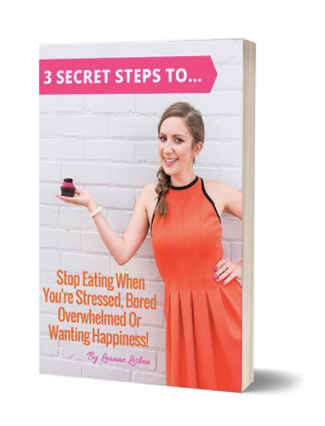
Leanne’s Free eBook Cover I kept the cover exactly the same, but tweaked the headline slightly for the landing page and ads. I changed it to: “3 Secrets to Crush Emotional Eating when Stressed, Bored or Overwhelmed”.
As a copywriter first and foremost, there are 3 changes I made and here’s why:
1) I took out ‘steps’ – it fits in perfectly, but it’s unnecessary and just adds length to the cover that doesn’t need to be there.
2) I removed “wanting happiness” – due to the ‘power of 3’ rule. Have you ever noticed how when we tell a joke, the punchline is always on the third point? It’s been proven time and time again, that when it comes to persuasion and influence, having only 3 options, or punchlines, or adjectives in a sentence is far more powerful than 2, 4 or any other number. You can read about it in this Business Insider article. So I just took out the last point, as the headline flows better.
3) I changed ‘Stop Eating’ to ‘Crush Emotional Eating’. This is for a few reasons. For starters, Crush is far more powerful as a word than Stop. Likewise, Emotional Eating is the specific problem we want to address – and we want to attract people that are aware of that problem.
Now, with that finished, I set about building the landing page for the start of the funnel – and I followed a specific format: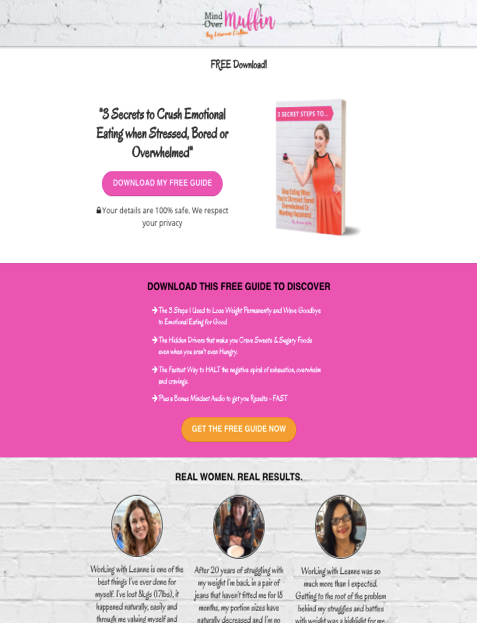
Screenshot of Landing Page
1. Clear Header with logo and branding displayed
2. Headline, Call to Action Button and Image related to the Offer
3. Bullet Points explaining the Offer. Here I will always have the 3 – 4 biggest benefits the prospect will receive when they opt in. I finish this with a Call to Action.
4. Testimonials from Existing Clients. For this, we used Leanne’s current 1 on 1 clients.
5. Call To Action Bar
6. Bio of Leanne – you can see both of these if you want to view the landing page here.It really is that simple. I used a mixture of on brand colours for the landing page to make all of the copy contrast well and help to improve conversions.
Now, on to the consult page.
In terms of design, you can see we went with pale, brand consistent colours with simple and easy to read font. Most importantly, we maintained congruency with the landing page to maintain trust for the entire customer journey through the funnel.
This may seem obvious, but you’d be amazed at the amount of time I see horrendous landing page design with hard to read font.
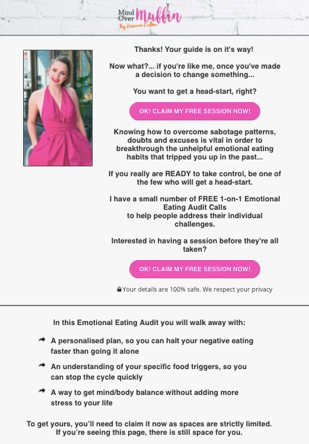
Screenshot of Consult Page With this page, I want to break down the important psychological elements in the copy and why it’s been written this way. It’s very similar to the consult page I create for this funnel here.
Make sure you read the article. It’s another example of how the same offer can work for different people in the same market. You just need to figure out what that offer is.
Anyway:
1. Acknowledgement: Always acknowledge the action a prospect has taken, before making another offer. Simply just congratulate them, and then position your upgraded offer, which in this case is the strategy call. If you ignore this one line of copy, it can drastically affect your conversion rate.
2. Bridge: The next step is to ‘bridge’ them to the new offer. For this funnel, we simply said – “Now what?… if you’re like me, once you’ve made a decision to change something… You want to get a head-start, right?”. To drive someone to take action, you tease them with the idea of solving the pain they are having much sooner.
3. Offer & Call To Action: I will next present the offer, which in this case is a 1 on 1 Emotional Eating Audit, where Leanne helps her clients breakthrough whatever is holding them back with their diet, before offering them more help in her program. The Call To Action is placed twice throughout this.
4. You’ll Walk Away With: After this first CTA, there are bullet points in the next section that highlight the specific benefits of the call, to further entice the prospect, before the final CTA button.
5. Testimonials: Again, Testimonials are placed on this page, that show the results Leanne’s clients have received as a result of working with her. Below this we place another Call to Action, just like the landing page had. It’s important to add as many as possible.
6. Bio and Final CTA: Again – Leanne’s bio is added at the bottom of the page to further solidify her credibility and build trust with the prospect.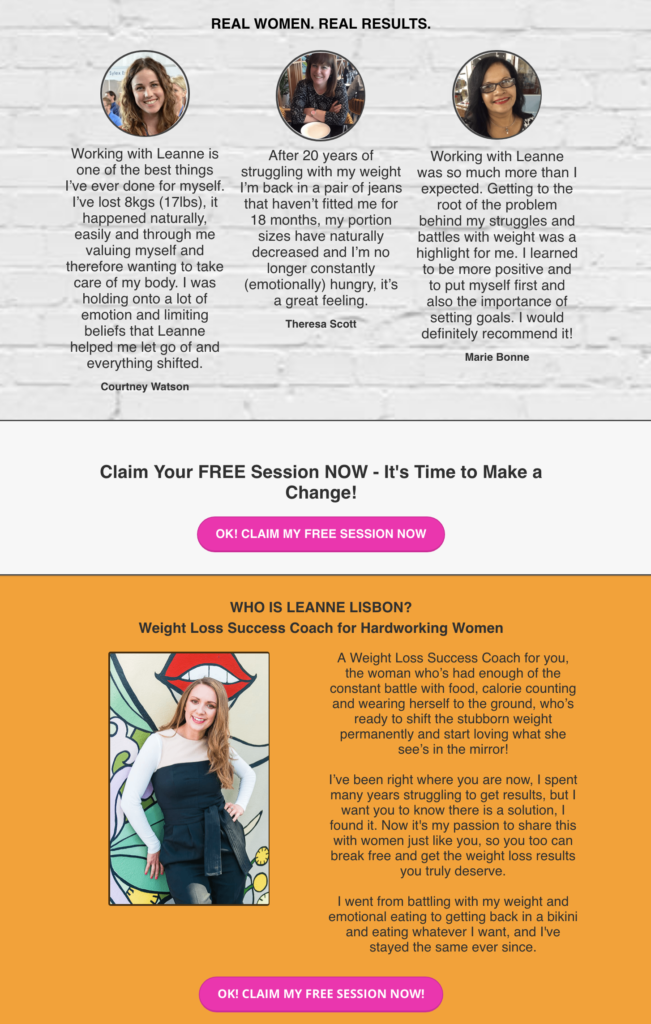
If a prospect opts in for a phone call, they would then reach the final thank you page. Now, it’s worth noting that if they go straight through the funnel and opt in, they haven’t actually been indoctrinated about Leanne or any of her work properly.
The good news is – this is to be expected. When a prospect goes through such a simple process – the sale will likely be more difficult. However, the price per call will be a lot cheaper, so it’s a great place to start for most coaches.3. Facebook Campaign
As always, I run Facebook traffic to my funnels. In this section, I break the ads in terms of the main two critical factors – Creatives Targeting.
CreativesGiven the offer on the front end of the funnel, which was: “3 Secrets to Crush Emotional Eating when Stressed, Bored or Overwhelmed” – the ad was always going to follow a very similar format.
Now, when I first launched the ads, we actually had a lot of trouble getting reach. No matter what I tried, manual bidding, automatic, different placements, Facebook would not serve the ads. Eventually, I shortened the ad copy down to just a few lines and this worked the trick.
It was weird, because they didn’t ban or disapprove the ad, they just obviously stopped serving it and had an issue with it. This is most likely due to the fact the ad mentioned “emotional eating” – as dieting is a sensitive topic when it comes to Facebook’s ad policy.
Either way – this is what the ad looked like:
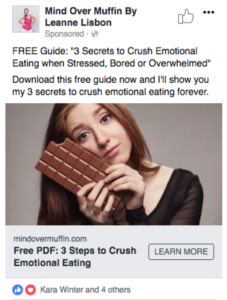
First Facebook Ad
I initially had slightly longer copy.
However after taking out the body of the copy where I talked about the pain around emotional eating and weight loss – the ad got approved and started reaching the intended audience.
I tested a few different images however – as you’ll see when you reach the results below – the results were very conclusive from the get go.
TargetingWhen I launched the conversion campaign – I started out with 3 ad sets. I had one interest in each audience I was targeting, which included:
– I Quit Sugar
– Michelle Bridges: 12 Week Body Transformation
– Weight Watchers
After launching, I will always extensively test interests. I will look at demographics from within each audience of an interest.Does a certain age bracket, or area, or device convert better for each interest? If it is relevant, I will look at gender data too.
Once the campaign got going, I set up a retargeting ad set, and an audience that included anyone who had visited Leanne’s website. Naturally, the website visitors were far cheaper than the cold, interest based audiences.
We then launched the campaign – It was December 2016 when this began.
4. Results
This is truly one of my favourite campaigns. We literally ran it for nearly one year, with minimal changes. Just management, optimisation and testing. But the core part of the funnel stayed the same – which shows how truly powerful it is when you have a solid strategy.
Here are the Facebook Results from December 1, 2016 to December 1, 2017:
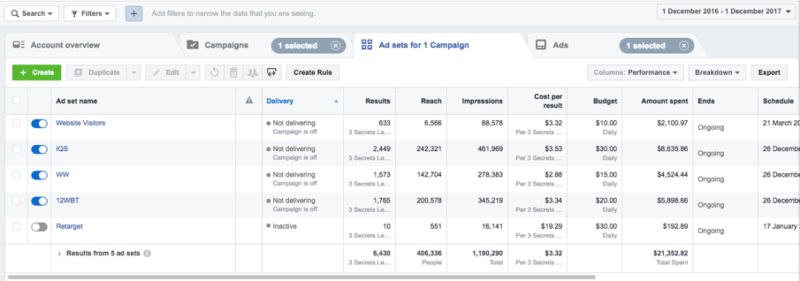
Facebook Ads Manager: Leads Numbers As you can see, from Facebook’s ad manager, we generated 6,430 leads at $3.32 per lead – a total ad spend of $21,352.82.
You can also see that 432 strategy calls were booked at $49.43 per session:
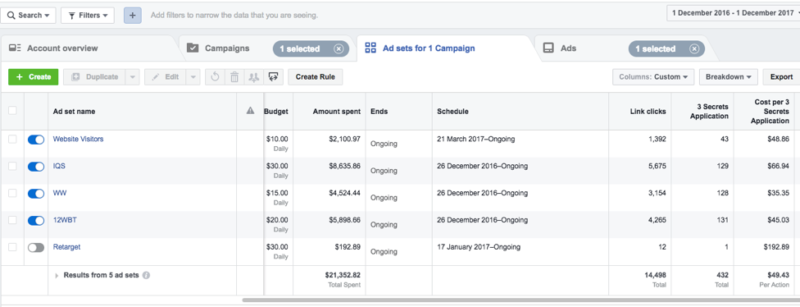
Facebook Ads Manager: Strategy Session Numbers
Now… if you’ve read this far, you are probably thinking – but those numbers are different to the ones in the headline James?
And yes – you are correct. Because here’s the thing:
Facebook’s pixel is sometimes inaccurate, so you need to check how many leads and calls actually came into the system, which is why I always cross reference it with Clickfunnels.
As you can see, this show’s the actual reality:
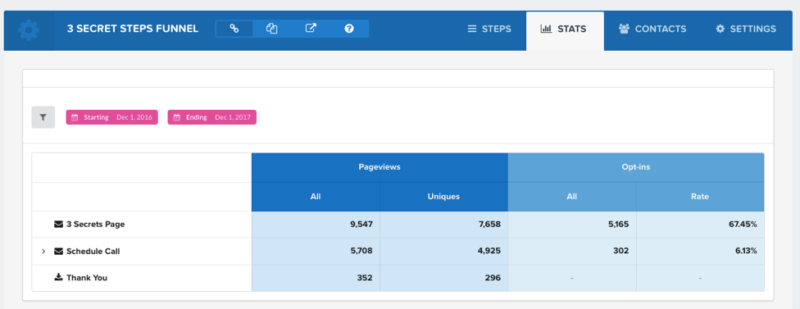
Funnel Data as reported through Clickfunnels
5,165 Leads, 302 Strategy Calls. The conversion rate for the landing page was 67.45% and for the call page was 6.13%. This changes the overall metrics. We know these Clickfunnels values are accurate because the actual leads contact information is attached to Clickfunnels.
On top of that, here is the growth of Leanne’s email list as shown across the same time period in Active Campaign.
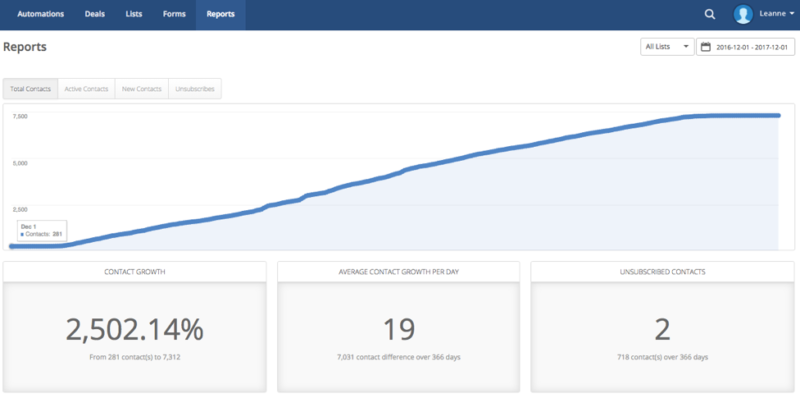
Active Campaign User Growth 2502.14% growth.
When we started working together in December 2016, her email list had 281 people. Today it has over 7,300 – which is a staggering result. A whole new list of warm prospects that she can nurture and sell to for life. Although I must note that about 2,000 of those came from other marketing sources.
Very cool.
So – to recap the metrics:
Ad spend: $21,352.82
Strategy Calls: 302
Cost per Call: $70.70
Leads: 5,165
Cost per Lead: $4.13
Sales: $128,500
I want to explain something here that is very relevant in this case. Leanne put a lot of work into sales and closing people into her program. I am proud to admit, that this is one of the main reasons this funnel was successful. Leanne made $96,000 from selling the course she created, and the remaining $32,500 from upgrading some of these clients into retreats she ran. Leanne is truly amazing and deserves a tonne of credit for booking the sales calls and closing them. She’s a superstar!
5. AnalysisLooking back at this campaign now, there are 3 reasons why it worked so well.
1. Crystal clear market with a solid offer
Leanne new her market well and was already generating massive results. This made it easy to create an offer that appealed to the market.
2. Great Marketing with the right strategy & a concise messageThe marketing strategy was perfect for this niche. The message resonated with consumers in this market, which made them interested in both Leanne and the subject matter. The marketing, being well executed, lead them to take action.
3. Strong sales focused on helping other people
As I said – Leanne is great at sales and empowering people to take action, which makes a massive difference to the end result of this kind of marketing funnel.
Anyway – I hope you enjoyed this post! That’s all for now.
Let me know your thoughts and comments below.
JH
Discover How James is different
- Grow a Consulting Business from 4 to 20 Staff in 12 months?
- Marketing Funnels that Generate $100,000 in 30 days?
- $132,500 in Sales from $21k in ads? James has done it all
- Not only does he have results, but James blogs about all his campaigns on this website, in a never before seen level of detail. No secrets. Nothing to hide.
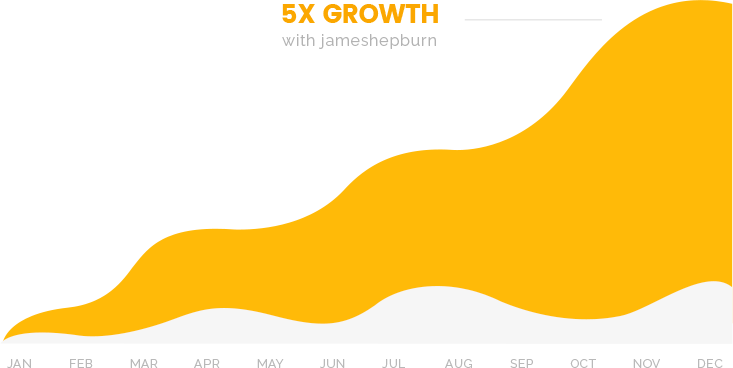
Where to next?
The Best ROI Driven Marketing Content All in One Place
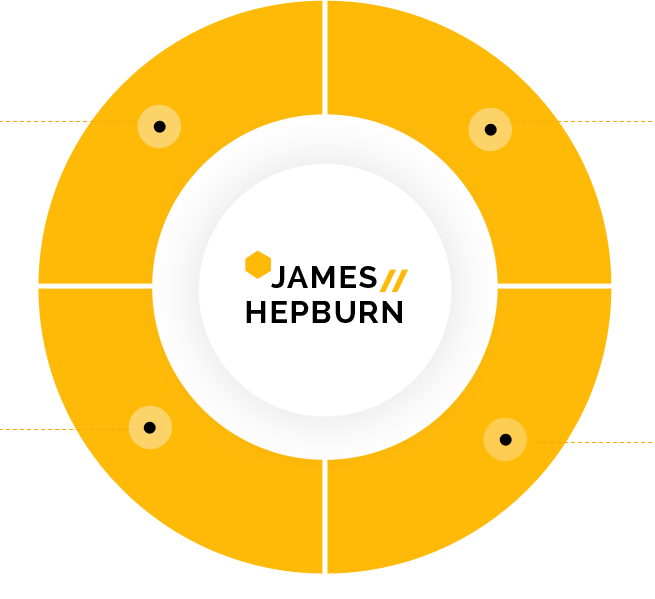
More about James Hepburn
Direct Response Copywriter & Marketing Strategy Expert.
In the past 3 years, James has spent $500,000 on Online Media across 12 different industries with virtually unmatched results. From a 4000% ROI in the online coaching space, to 5 figure direct mail campaigns and 6 figure marketing funnels in numerous industries for clients – James has done it all.
Best of all, James breaks down every element of these campaigns here on his website – showing exactly what goes into a successful marketing campaign.


